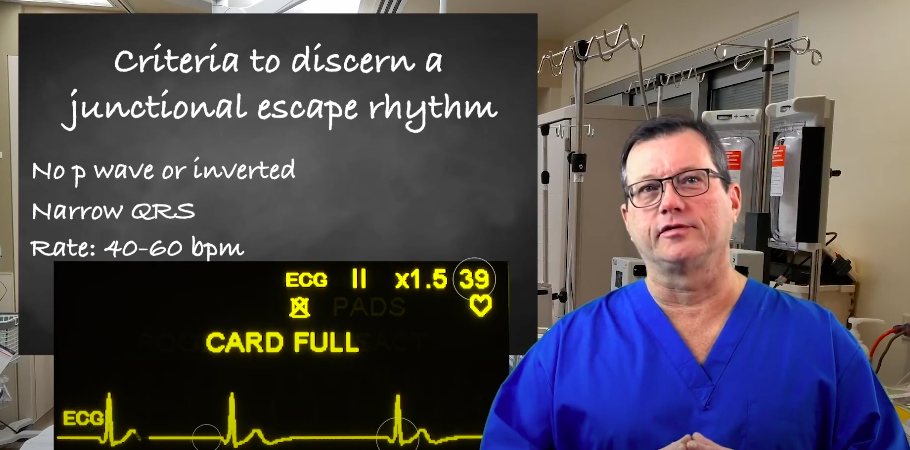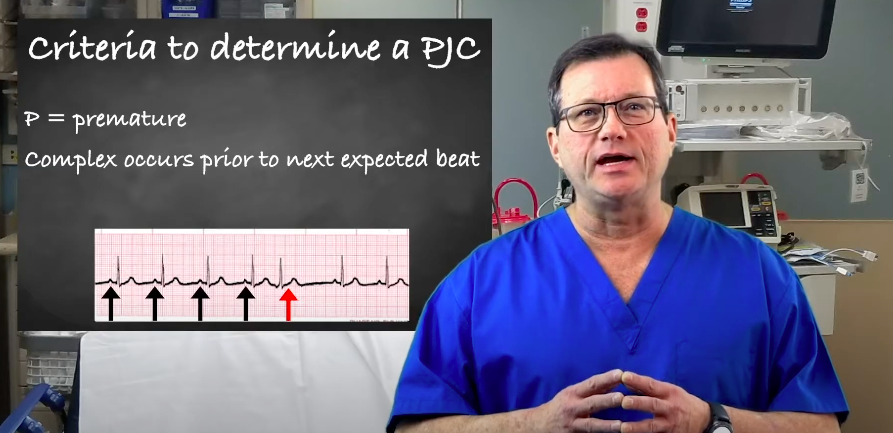Criteria for a Junctional Escape Rhythm
ACLS Certification Association videos have been peer-reviewed for medical accuracy by the ACA medical review board.
Article at a Glance
- Junctional escape is characterized by:
- Regularity: Regular
- Rate: 40–60 bpm
- P Wave: Inverted, if visible; may be before, after or within the QRS
- PR Interval: If before the QRS, PRI <0.20 second; otherwise, not measurable
- QRS Complex: < 0.12 second
There are several indicators of a junctional escape rhythm on an ECG tracing. First, look at the P wave. It will either be completely absent, or it will be inverted. The inverted P wave may appear before or after the QRS. If it’s trapped within the QRS, there will be no visible P wave. The conduction originates at the atrioventricular (AV) node and takes a normal path through the ventricles, so the QRS should be normal and narrow. As for the heart, the AV node’s inherent firing rate is between 40 and 60 beats per minute. In a junctional escape rhythm, be sure to watch for: One tip is to leave a little pressure on the Ambu bag with your thumb after administering a breath. Read: Rhythm-based Management in Cardiac ArrestCriteria for Junctional Escape Rhythm
Related Video – ECG Strip: Junctional Escape

Summary
There are several indicators of a junctional escape rhythm on an ECG tracing. The P wave will either be absent or inverted. The QRS complex will be narrow, and the heart rate will be between 40 and 60 bpm.
Related Video – What are Junctional Rhythms?
More Free Resources to Keep You at Your Best
Editorial Note
ACLS Certification Association (ACA) uses only high-quality medical resources and peer-reviewed studies to support the facts within our articles. Explore our editorial process to learn how our content reflects clinical accuracy and the latest best practices in medicine. As an ACA Authorized Training Center, all content is reviewed for medical accuracy by the ACA Medical Review Board.
